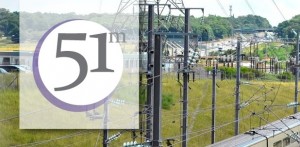From 51M:
 In a week when Simon Jenkins writing in the Guardian called HS2 a zombie train, other developments made the project look more like a beached whale.
In a week when Simon Jenkins writing in the Guardian called HS2 a zombie train, other developments made the project look more like a beached whale.
Network Rail unveiled ambitious plans for an advanced digital signalling system on the classic network. The announcement raises further fundamental questions about the wisdom of ploughing £56bn into one high-speed line.
Given the aura of tomorrow’s train travel that supporters constantly highlight about HS2, the project seems to proceed in its own bubble with respect to taking into account the impact of other technological advances in rail travel.
Such tunnel vision is not new. The project’s original business case was based to a significant extent on the assumption that people don’t work on trains – only for the Secretary of State for Transport to announce subsequently the roll-out of wifi on the network….enabling people to work on trains.
Without doubt digital signalling is a technological advance that will be central to the future of the nation’s rail network. According to Network Rail the digital system will allow 40% more trains to run on existing lines. Moreover, the appropriate phasing-in of the changeover could make a substantial contribution to redressing the North-South economic imbalance – certainly far more than HS2 ever could. But for taxpayers HS2 may be the only game in town.
The other factor, almost certainly to be challenged by the government, is that the vast sums poured into HS2 could adversely affect funding for digital signalling. Network Rail plans to roll out the programme nationally from 2019. It could take up to 25 years to finish but Network Rail hopes to speed this up to 15 years. Just imagine how that time frame could be shortened if HS2 was not getting the primary call on funding.
The proposed new digital system, known as European Train Control System (ETCS), sweeps away signals completely. It allows trains to run much closer together; safety margins are determined by a train’s speed and braking capacity rather than fixed signals.
The potential gains of HS2 are uneven – areas away from the line will not be boosted economically to the same extent. By contrast, a prioritise digital signalling programme could be truly transformative for the whole country.
While HS2 increasingly has the appearance of yesterday’s solution, digital signalling looks like an idea whose time has come. However, it is the latter that could be left in a siding as the runaway train rumbles by.
